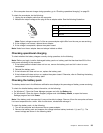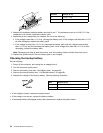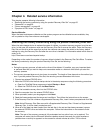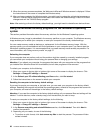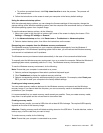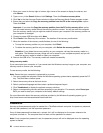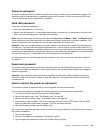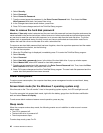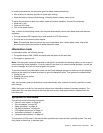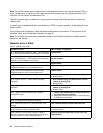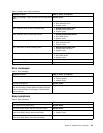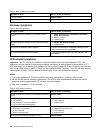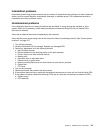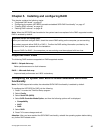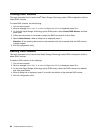
In certain circumstances, the computer goes into sleep mode automatically:
• After a period of inactivity specied in power plan settings
• When the battery indicator blinks orange, indicating that the battery power is low
To cause the computer to return from sleep mode and resume operation, do one of the following:
• Press the Fn key.
• Open the LCD cover.
• Turn on the power button.
Also, in either of the following events, the computer automatically returns from sleep mode and resumes
operation:
• The ring indicator (RI) is signaled by a serial device or a PC Card device.
• The time set on the resume timer elapses.
Note: The computer does not accept any input immediately after it enters sleep mode. Wait a few
seconds before taking any action to reenter operation mode.
Hibernation mode
In hibernation mode, the following occurs:
• The system status, RAM, VRAM, and setup data are stored on the hard disk.
• The system is powered off.
Note: If the computer enters the hibernation mode while it is docked to the docking station, do not undock it
before resuming normal operation. If you do undock it and then try to resume normal operation, you will get
an error message, and you will have to restart the system.
To put the computer into hibernation mode, use the Power Manager program to dene one of the following
actions as the event that causes the system to go into hibernation mode. Then perform the dened action.
• Closing the lid.
• Pressing the power button.
• Pressing Fn+F4.
Also, the computer goes into hibernation mode automatically after a period of inactivity specied in power
plan settings
When the power is turned on, the computer returns from hibernation mode and resumes operation. The
hibernation le in the boot record on the hard disk drive is read, and system status is restored from the
hard disk drive.
Symptom-to-FRU index
This section contains following information:
• “Numeric error codes” on page 42
• “Error messages” on page 43
• “Beep symptoms” on page 43
• “No-beep symptoms” on page 44
• “LCD-related symptoms” on page 44
• “Intermittent problems” on page 45
• “Undetermined problems” on page 45
The symptom-to-FRU index in this section lists symptoms and errors and their possible causes. The most
likely cause is listed rst, in boldface type.
Chapter 4. Related service information 41



